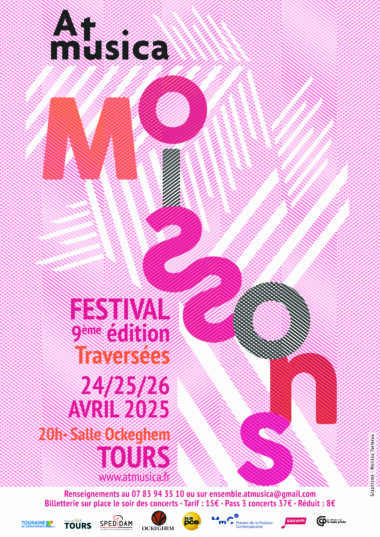Plus de détails
21.VIII-2014. Helsinki, Helsinki Music Center. Claude Vivier (1948-1983): Orion. Pyotr Tchaikovsky (1840-1893): Violin Concerto, op. 35. Sergei Rachmaninoff (1873-1943): Symphonic Dances, Op. 45. James Ehnes, violin. Peter Oundjian, conductor.
22.VIII-2014. Helsinki, Helsinki Music Center. Dmitri Shostakovich (1906-1975): Symphony No. 11, Op. 103. Toronto Symphony Orchestra. Peter Oundjian, conductor.
 The Toronto Symphony Orchestra, despite being one of Canada's flagship ensembles, has had a difficult recent history. Throughout the 1990s and early 2000s, the orchestra struggled with financial difficulties, a musician's strike, poor attendance, and a seeming lack of public sympathy to the orchestra's situation. Some even wondered if the orchestra would survive. The fact that the ensemble has risen from the abyss and is now touring some of Europe's major halls and festivals could be called miraculous.
The Toronto Symphony Orchestra, despite being one of Canada's flagship ensembles, has had a difficult recent history. Throughout the 1990s and early 2000s, the orchestra struggled with financial difficulties, a musician's strike, poor attendance, and a seeming lack of public sympathy to the orchestra's situation. Some even wondered if the orchestra would survive. The fact that the ensemble has risen from the abyss and is now touring some of Europe's major halls and festivals could be called miraculous.
Claude Vivier is arguably Canada's most well-known composer, although his name was likely unfamiliar to many in this evening's audience. Orion is one of the two strictly orchestral works which Vivier managed to compose in his short life. The work opens with a sense of expectation, like a vast galaxy has been opened. Two solo trumpets introduce some of the key material which will be used throughout the piece. As the music evolves, Vivier paints broad horizons and starlit skies. Tuned gongs suggest a gamelan ensemble, perhaps reminiscent of the composer's travels in southeast Asia. The work concludes with a massive full orchestral chorale, before an abrupt woodblock strike. Vivier's ability to seamlessly combine his many sound worlds into one universe was genuinely impressive, and one is left wanting more, or in my case, a lot more. A wholly successful piece.
After the Vivier, the Toronto SO focused mostly on Russian music for the remainder of their Helsinki programs. James Ehnes was the soloist in the Tchaikovsky Violin Concerto, and his performance was a reminder of why this work continues to be a musician and audience favorite. What was particularly successful about Ehnes' playing is his charismatic yet non-effusive style, which suited a work as quintessentially romantic as this one. As an encore, Ehnes performed the Largo from Bach's Sonata No. 3 for Solo Violin.
Rachmaninoff's Symphonic Dances is the composer's last completed work. In this piece, Rachmaninoff dispenses with the effusive melodies for which he is known but retains his sense of melancholy. Helsinki audiences have heard this piece performed several times in recent years, but this performance may have been the best of them.
If the Toronto SO deserves wider recognition for one thing, it would be the quality of its string section. Their tight ensemble and unity of tone paid major dividends in the extended melody of the central section of the first movement, the ghostly viola runs of the shadowy second movement, and the exciting conclusion of the final movement. Other highlights included the perfectly blended interplay between solo saxophone and woodwinds in the first movement, and the accuracy and precise rendering of the second movement's coda.
Following the Rachmaninoff, the orchestra returned to Tchaikovsky in an encore performance of the third movement from the Symphony No. 6. In addition to giving the strings another opportunity to shine, the brass, who seemed curiously restrained throughout the evening, played with full tone and considerable power.
The second Toronto SO program was marketed as « casual, » with a late start time, pre-performance talk, and a one-hour format. While this might have been an appropriate description, the tragic and defiant nature of Shostakovich's Symphony No. 11 certainly does not appear to be casual listening.
Although Shostakovich's Symphony No. 11 is arguably the composer's most accessible symphony, with its visceral power and cinematic elements, it is nevertheless problematic. Shostakovich works with two main ideas: various folk tunes and popular songs which would have been familiar to the audience during the premiere, and static and sustained chords, suggesting a frozen and expectant landscape. This material develops and evolves minimally throughout the course of the work, if at all. Accordingly, one of the major challenges for the conductor is to maintain a sense of stasis when necessary but to also keep the musical argument moving forward.
It seemed that Oundjian tried to find that elusive middle ground. This was mostly successful, but the first and third movements of this symphony are rather long-winded, regardless of the performance. Nevertheless, it was a pleasure to hear the Toronto strings for another evening: the magical and expectant (if somewhat unsettling) atmosphere in the many static sections, ferocious but disciplined playing in the second movement, tight ensemble and warm tone in the third movement (special mention goes to the viola section). Other highlights included an appropriately violent and loud « massacre scene, » and excellent contributions from English horn and bass clarinet in the last movement.
As an encore, Oundjian conducted the Nimrod movement from Elgar's Enigma Variations. The work opened with a heavenly piannisimo from the strings, and built up to a warm and ideally balanced climax. One was left wanting to hear the entire work with these forces.
Peter Oundjian © Sian Richards
Plus de détails
21.VIII-2014. Helsinki, Helsinki Music Center. Claude Vivier (1948-1983): Orion. Pyotr Tchaikovsky (1840-1893): Violin Concerto, op. 35. Sergei Rachmaninoff (1873-1943): Symphonic Dances, Op. 45. James Ehnes, violin. Peter Oundjian, conductor.
22.VIII-2014. Helsinki, Helsinki Music Center. Dmitri Shostakovich (1906-1975): Symphony No. 11, Op. 103. Toronto Symphony Orchestra. Peter Oundjian, conductor.









